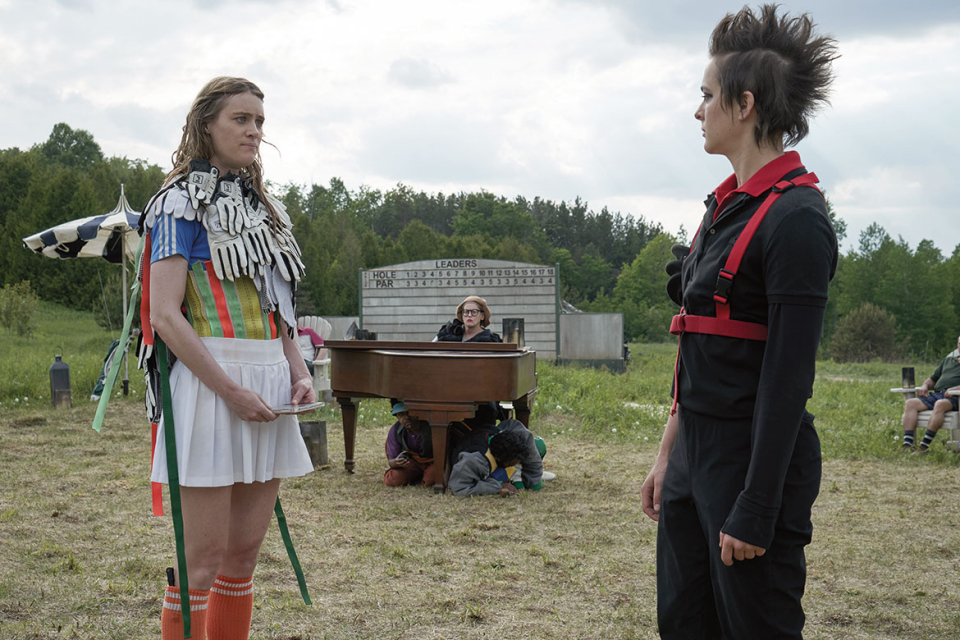When Patrick Somerville first met Emily St. John Mandel — the author of Station Eleven, the book — in 2012, he was still a novelist himself, and he and Mandel were doing a reading together in Chicago. He'd already published two novels — The Cradle and This Bright River — but making a living as a writer was tough and he wanted a career change. Driving to the airport together, he and Mandel talked about how it felt to realize their childhood dreams of becoming novelists — and what a disappointment that could be.
"I was like, 'I don't think it's worth it. I think I'm going to try to write for TV,'" Somerville recalls. "And she was like, 'I'm going to try to write one more novel.'" The two new friends went their separate ways — he to write for The Leftovers and to create Maniac, and she to publish Station Eleven, which became a runaway hit and a National Book Award finalist after its 2014 publication.
Somerville loved Mandel's book, which follows the survivors of a global pandemic as they rebuild their lives; some form a traveling group of performers whose motto is "Survival is insufficient." In the world Mandel created, various forms of art — graphic novels, music, live theater — provide a reason to keep going.
With Mandel's blessing, Somerville pursued rights to the book and adapted it as a limited series for HBO Max. He serves as creator, showrunner, writer and executive producer of the ten episodes; the first three dropped on December 16, with more following weekly.
Mandel's novel had been criticized for being a little soft in dealing with its harsh subject, but Somerville's take acknowledges the story's pain and death in a more visceral way: "We never wanted to tell a story that pretended a catastrophic amount of suffering hadn't happened," he says.
For instance, Station Eleven's protagonist, Kirsten — eight when the pandemic hits and a young woman (Mackenzie Davis, Halt and Catch Fire) when much of the action unfolds twenty years later — is far more traumatized in Somerville's telling. Her collection of knife tattoos (each representing a person she's had to kill) keeps increasing, as does her anxiety about people leaving her orbit.
"We needed to track how she survived," Somerville says. "This was a question that was so tantalizing in the novel but was never really mined."
So he started mining.
As he did on The Leftovers, he likes to explore characters who can't outrun their past. Somerville began the project long before the real-world pandemic began, and he managed to shoot two episodes before the shutdown.
But even before pandemic fatigue might have been considered an issue, he wanted to make sure this series would differ from whatever else might come along. So he took elements that would usually be foregrounded and moved them into the background. He frontlined character interactions and gave the main characters more room to grow.
"We wanted to make a post-apocalyptic show about art and joy," he says. "And we wanted it to feel earned."
This story originaly appeared in Issue #12, 2021, of emmy magazine under the title "Full Circle."












